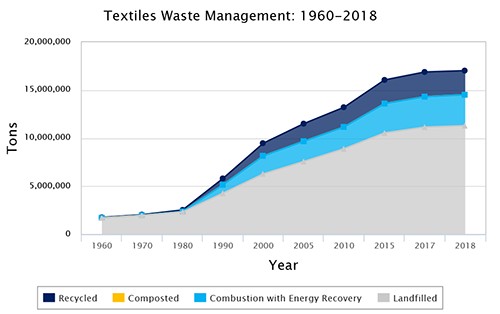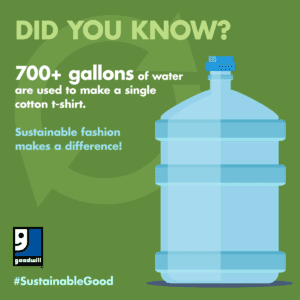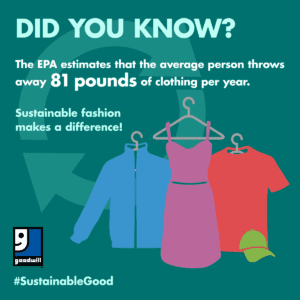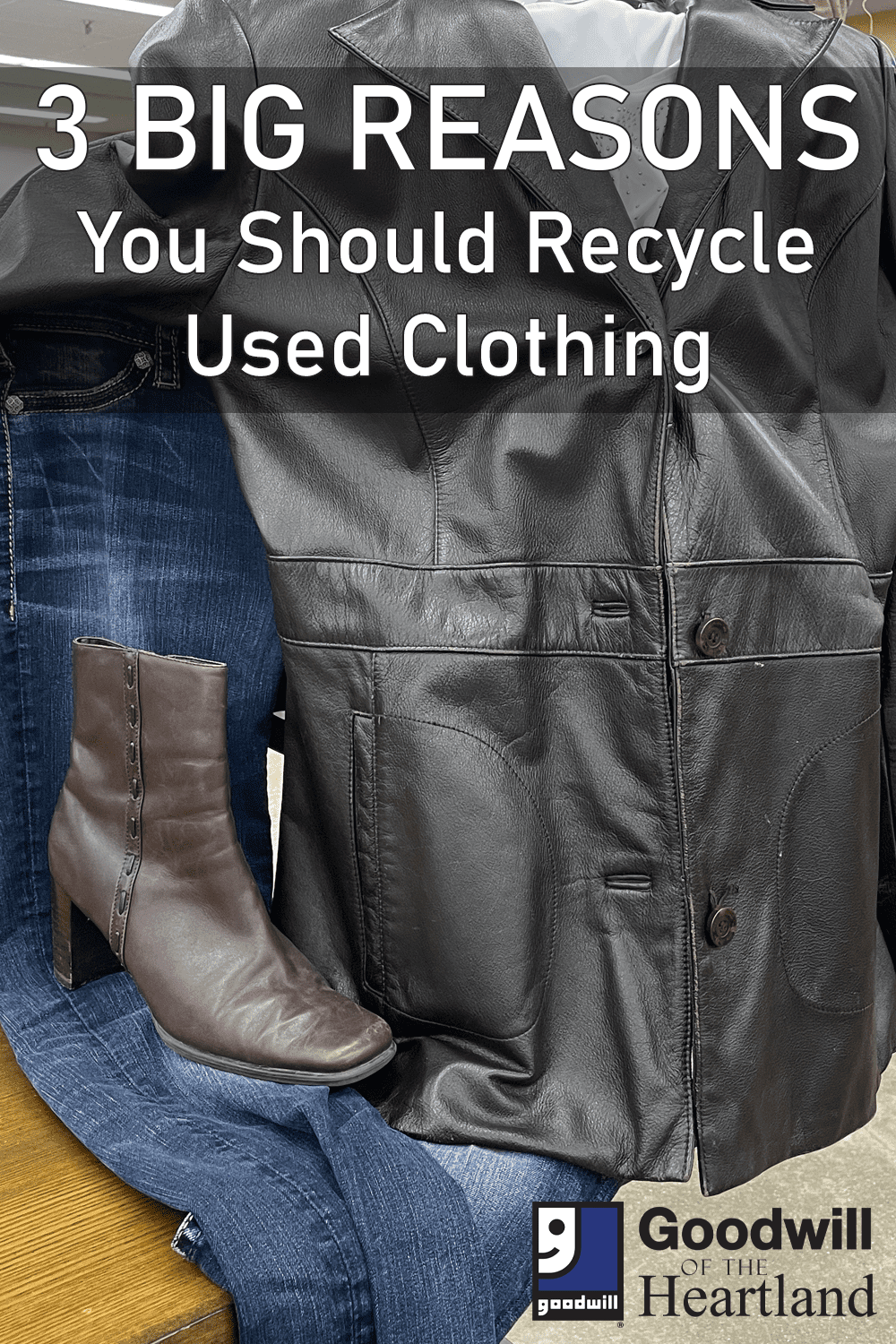
We don't think twice when we drop an old newspaper or plastic jug into a blue recycle bin, so why do we keep tossing textiles like our worn clothing and shoes into a trash can? Probably because many people don't understand the impact textiles are having on landfills and the environment.
Need a reason to begin recycling your old jeans and t-shirts? Here are three.
Reduce Waste
According to the U.S. Environmental Protection Agency, discarded clothing is the main source of textiles in municipal solid waste. And in 2018 (the most recent figures available) more than 17 million tons of textiles were discarded with the vast majority (11.3 tons) being dumped into landfills.
A ton is 2,000 pounds, which is still a fairly large amount to visualize, right? Let's break it down. On average an adult-sized pair of jeans is nearly a pound - .94 lbs to be more exact. So, 2,000 pounds (a ton) of jeans would be about 2,128 pairs. If we're looking at t-shirts, on average an adult size weighs .43 pounds. So, it would take roughly 4,651 to create a ton of t-shirts. That's a lot of clothing being dumped by consumers each year, with very little being recycled.

And, unfortunately, even organic fabrics - think cotton, linen and silk - have a difficult time composting or breaking down once they're part of a landfill. This is because when this stuff is piled into a landfill it can't access the oxygen it needs to naturally break down. Instead, the material is digested by microorganisms, which produces less-than-desirable byproducts such as methane.
Synthetic fabrics - think polyester, nylon and spandex - take even longer to disappear. Nylon, for example, takes between 30 and 40 years to decompose. Polyester and lycra, however, can last more than 500 years - long after their original owner has left the earth.
Finally, landfill space quite literally costs us all, typically in the form of local government taxation. So the more textiles we can divert from landfills, the more space we can save in those landfills.
Conserve Energy
You may have seen news reports cautioning consumers on rising energy costs. What you may not realize is it takes a lot of energy to create a piece of clothing. It begins with the energy needed to grow or create the fiber that comprises the fabric and other materials. There is the washing, dyeing and bleaching the fibers undergo. Then there is the design and assembly of each piece, followed by the energy expended during packaging and distribution.
When clothing is tossed aside instead of reused or recycled more energy is needed to produce more clothing, creating a vicious and unsustainable cycle of fashion. The longer a piece of clothing is used, the less energy is wasted.
This is why some people are subscribing to a practice known as "slow fashion." In contrast to past fashion practices that encouraged speedy production and use, often of lower-quality garments, slow fashion believes in slower production and deliberate consumption. In short, slow fashion people buy fewer items and generally focus on quality and longevity. Many also adopt a "per wear" cost to determine if a piece of clothing is a good investment.

Help Those In Need
Many headlines scream of a world of scarcity, and rightfully so. The non-partisan Government Accountability Office notes that food insecurity remains a daily challenge for millions of Americans. While government assistance kept some of the most vulnerable Americans functioning throughout the pandemic, poverty is once again on the rise. Supply chain issues have negatively impacted everything from this year's Halloween costumes to smart chips. But, when it comes to textiles like clothing, Americans are more than flush.
The current population estimate for the United States is roughly 334 million people. Every year, however, an estimated 450 million pairs of jeans are sold in this country. Globally, 1.2 billion pairs of jeans are purchased each year, contributing to a worldwide market estimated at more than $110 billion.
And that's just the jeans. We gobble up nearly 2 billion t-shirts each year and spend about $59 million on new underpants. Each of these new garments arrive with a cost, but we can be more "green" and create a sustainable fashion industry by choosing to reuse and recycle.
The easiest way for consumers to start is by donating used textiles to charities, like Goodwill of the Heartland. Resell of these items help us fund our mission to help people overcome barriers to independence. What does that mean? It means we help people access the skills they need to advance in their current job or pursue a new career. We help military veterans transition back into civilian life. We partner with local, state and federal agencies and well-known businesses to provide training initiatives, offer second chances, help people live independently and earn industry-recognized credentials.
Families shop our stores and are able to stretch their paychecks a little further while obtaining the items they need for back to school, holidays, new jobs and daily living. To make sure your donations are available to the most vulnerable among us, we provide no-cost vouchers to many area organizations for sharing with their program participants and people in need.


Share this:
- Click to share on Facebook (Opens in new window)
- Click to share on Pinterest (Opens in new window)
- Click to share on Twitter (Opens in new window)
- More
- Click to email a link to a friend (Opens in new window)
- Click to print (Opens in new window)
- Click to share on Pocket (Opens in new window)
- Click to share on Tumblr (Opens in new window)
- Click to share on Reddit (Opens in new window)
- Click to share on LinkedIn (Opens in new window)
- Click to share on WhatsApp (Opens in new window)
- Click to share on Telegram (Opens in new window)
